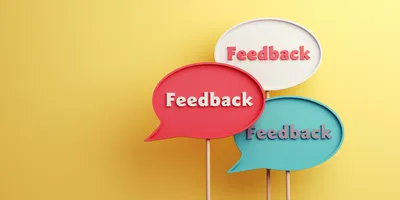In any laboratory, where precision, deadlines, and teamwork intersect, honest communication is vital—but not always easy. Even in supportive lab environments, feedback can go unspoken, leaving small issues to grow into larger challenges over time.
Harvard Business Review recently explored how leaders can strengthen team performance by fostering an ask-first feedback culture—where employees take initiative to seek feedback rather than waiting for it to be offered. Below, we expand on that concept with practical guidance for laboratory leaders aiming to build a culture of continuous learning and collaboration.
How ask-first feedback empowers lab teams
An ask-first feedback culture flips the traditional dynamic. Instead of focusing on giving more feedback, leaders create environments where team members regularly seek it. This approach reduces hesitation, builds trust, and encourages professional growth.
Feedback culture in labs creates shared responsibility and better communication
In traditional lab hierarchies, feedback often flows one way—from supervisor to staff. Research on feedback-seeking behavior shows that when individuals actively request input, they receive more actionable guidance and develop stronger professional relationships. Asking specific questions—such as “What’s one thing I could do differently to make this protocol more efficient?”—yields clearer, more relevant insights than vague prompts like, “Any feedback?”
For lab managers, this shift helps normalize dialogue across technical levels. When analysts, technicians, and supervisors all ask for input, feedback becomes a shared practice rather than a performance review ritual. It also signals that learning and experimentation are valued as much as precision and compliance.
How to create an ask-first feedback culture in your lab
To strengthen feedback culture in their labs, leaders can take these practical steps to encourage continuous learning and engagement:
- Teach specific feedback-seeking skills: Incorporate structured prompts into staff meetings, mentoring sessions, or onboarding programs. For example: “I’m working on improving data visualization—can you flag anything unclear in my report?”
- Model asking at the top: When lab leaders publicly request feedback—especially after projects or presentations—it makes curiosity contagious. Share examples of how feedback informed a procedural update, improved safety practices, or enhanced data quality.
- Recognize and reward asking: Highlight employees who proactively seek feedback. Include “learning agility” or “collaborative mindset” as review metrics to reinforce that asking for input is a strength, not a weakness.
- Embed feedback into lab routines: Build reflection into existing workflows. After audits, project handoffs, or equipment validations, ask: “What went well, and what can we refine next time?” Making these conversations routine strengthens accountability and psychological safety.
Why feedback culture supports stronger lab management and engagement
Laboratories that adopt an ask-first feedback culture gain more than improved communication—they foster resilience and innovation. When team members feel safe to ask for input, they engage more deeply with their work, identify issues earlier, and contribute to continuous improvement efforts.
For lab managers balancing productivity, performance, and morale, encouraging feedback-seeking behaviors can be one of the most effective tools for sustaining a high-functioning, growth-oriented culture of feedback.
This article was created with the assistance of Generative AI and has undergone editorial review before publishing.











